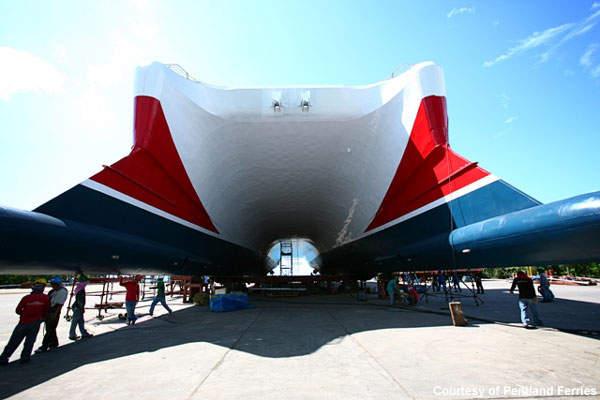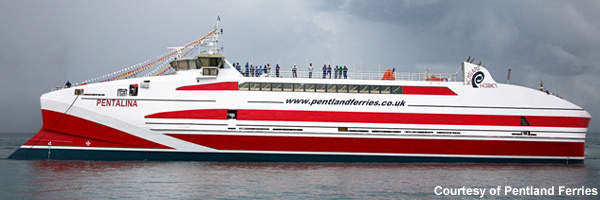The Pentalina is a catamaran RoPax ferry that will replace the MV Claymore on the Caithness to Orkney route across the Pentland Firth, Scotland, UK. The vessel was built for Pentland Ferries and will be able to carry 350 passengers, between 32 and 58 cars, and nine articulated lorries (load configuration can vary to suit requirements). Investment for the vessel is estimated at between £10-15m.
Construction
Work started on the Pentalina in Cebu, the Philippines, in February 2007 and was ready to launch in April 2008. The Pentalina was expected to take over the Orkney route in June 2008 but there were delays in installing equipment.
The Pentalina was then scheduled to take over the route in July but the journey from the Philippines to Scotland suffered bad weather, forcing a short detour to the port of Salalah in Oman. The ship is now travelling to the Suez Canal.
Technical
The Pentalina is a twin hull vessel with an overall length of 70m, a beam of 20m, a service speed of 15kt and a maximum speed of 19.7kt. The ship is registered in the UK with the Maritime and Coastguard Agency, and has an EU designation of 98/18 Group B. The Pentalina has been fitted out with a sundeck and two lounges.
The ship has been designed to handle the occasionally rough waters in the north of Scotland and will run all year around. The vessel was designed by the naval architects Sea Transport Solutions of Australia. The Pentalina will make the crossing in 45 min depending upon sea conditions.




